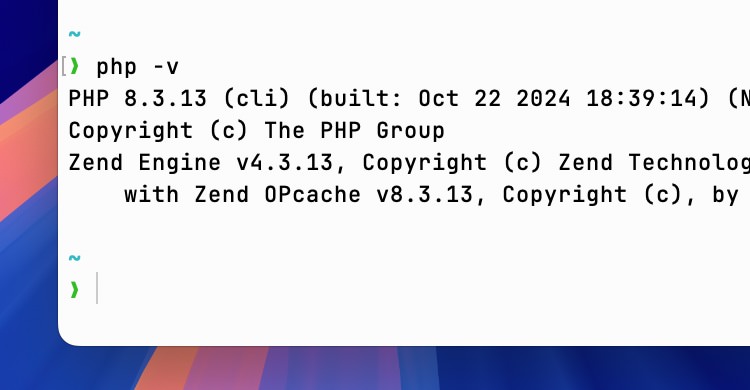Setting up PHP extensions traditionally involved difficult scenarios such as finding precompiled binaries, using operating system package managers, or manually compiling from supply. These methods may be inconsistent across platforms and require different directions, making the process sophisticated and error-prone.
PECL, while useful, seems antiquated. It is no longer so easy to place your extension in PHP because it is with Composer. PIE is an initiative by PHP Basis to get to the bottom of this problem by treating extensions like Composer programs. It simplifies the process, provides superior cross-platform consistency, and promises easier upgrades, and keep an eye out for PHP extensions.
We will have to have
Before we get started, you should definitely have PHP 8.1 or later to run PIE. Alternatively, PIE can organize extensions for any type of PHP installed. To check the PHP type for your computer, you will have the option to run: php -v

Organize
To insert it into the PHP Installer for Extensions (PIE), you will have the option to follow these steps:
1. Download the PHAR package
First you need to acquire the file pie.phar document from the repository or trusted web page. This is the researched theoretical document for using PIE.
2. PHAR organizes
Switch pie.phar on your computer PATHcomparable to /usr/local/bin/so you have the ability to run it from anywhere. You will have the option to rename it for convenience, for example:
mv pie.phar /usr/local/bin/pie
On home windows, you will have the option to switch to C:Program Data or some other record for yours PATH. Alternatively, I like to suggest using Composer and its CLI with House Home Windows Subsystem for Linux (WSL) for a better experience.
3. Make it executable
On non-home Windows computers, you need to change permissions to make it executable.
chmod +x /usr/local/bin/pie
That’s all. You will be in a position to try running pie for your terminal to appear if it is installed correctly.

Now we can use PIE to insert PHP extensions very easily using the file pie command.
pie arrange /
For example, let’s say you need to insert inside the file xdebug extension to debug your PHP application. You will have the opportunity to perform:
pie arrange xdebug/xdebug
This command will pull the file xdebug from Packagist, assemble and organize it for your PHP organization. PIE can also add the extension to your file php.ini document, so you don’t want to do it manually.
You will have the ability to find all the extensions which you can simply organize via PIE in Packagist.
Keep your home windows in mind
PIE in recent years no longer improves development extensions on home windows. It depends on the extension creator to provide the default DLL document for their extension, so there may be some extensions that you simply won’t be able to arrange on your home windows.
In conclusion
PIE is a great initiative to simplify the arrangement of PHP extensions. I like the way it treats extensions like Composer programs, making it easier to control and swap them. I believe it is a step in the right direction to modernize the PHP ecosystem and make it further user-friendly for developers.
The post Learn how to set up PHP extensions simply with PIE made the impression first on Hongkiat.
Scope of delivery: https://www.hongkiat.com/blog/how-to-install-php-extensions-with-pie/
[ continue ]
wordpress Maintenance Plans | wordpress hosting
Read more













